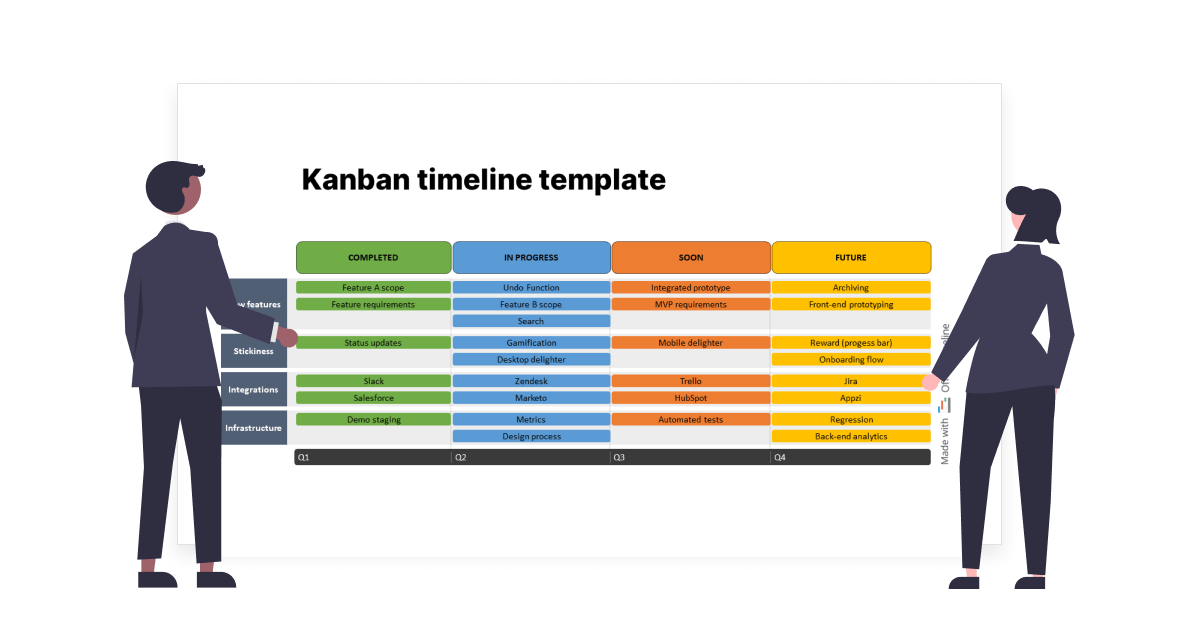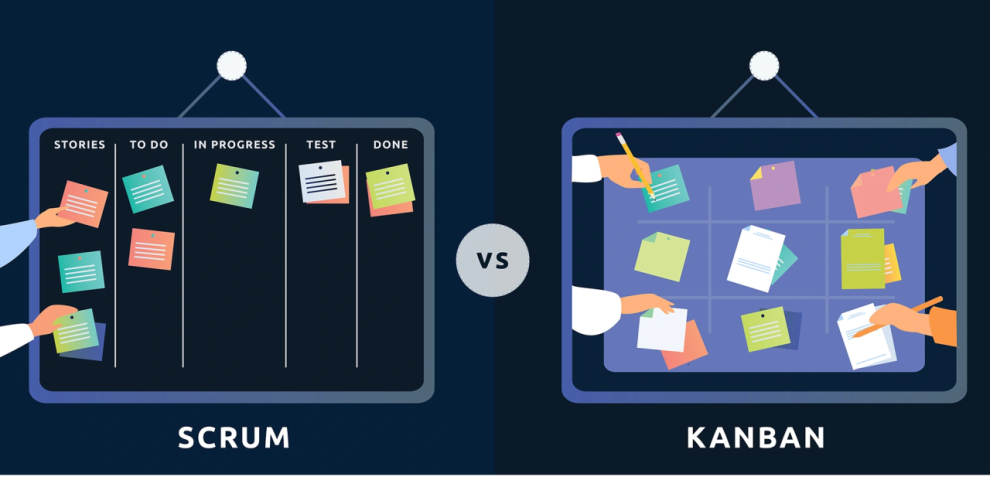The software development landscape thrives on constant adaptation and evolution. Traditional, rigid methodologies struggle to keep pace, leading to frustration, missed deadlines, and subpar products. Thankfully, agile frameworks like Scrum and Kanban offer a refreshing counterpoint. They promote flexibility, collaboration, and continuous improvement, empowering teams to deliver high-quality software, faster.
But with two prominent options – Scrum and Kanban – the question arises: Which framework best suits your software team? Deciding isn’t just about following trends; it’s about understanding your team’s unique needs and workflow.
Delving into the Structure of Scrum
Scrum thrives on structured sprints – short, time-boxed iterations (typically 2-4 weeks) where the team focuses on delivering a specific set of features. It operates on three core pillars:
- Roles: Product Owner (prioritizes requirements), Scrum Master (facilitates processes), and Development Team (delivers work).
- Artifacts: Product Backlog (list of prioritized features), Sprint Backlog (subset of tasks for the sprint), and Increment (working product at the end of each sprint).
- Ceremonies: Sprint Planning, Daily Scrum, Sprint Review, and Sprint Retrospective (meetings to plan, inspect, and adapt).
The Pros of Utilizing the Scrum Framework
Adopting Scrum offers several benefits:
- Focus and clarity: Sprints and a prioritized backlog keep everyone aligned and motivated.
- Increased predictability: Sprint planning helps estimate and deliver consistent value increments.
- Regular feedback: Frequent reviews and retrospectives enable course correction and continuous improvement.
The Cons to Consider with Scrum
While advantageous in many ways, Scrum also comes with some downsides:
- Rigidity: The strict structure might feel confining for some teams, hindering flexibility.
- Overhead: The Scrum ceremonies can feel excessive for small teams or simple projects.
- Potential for overcommitment: Teams might underestimate complexity, leading to sprint failure.

Examining the Flexibility of Kanban
Unlike Scrum, Kanban embraces continuous flow with a focus on optimizing workflow and maximizing efficiency. Instead of structured sprints, Kanban operates with ongoing delivery, visualizing work on a Kanban board containing columns like “To Do,” “In Progress,” and “Done.”
Kanban adheres to these core principles:
- Visualize workflow: The Kanban board provides transparency and promotes collaboration.
- Limit work in progress (WIP): Focus on finishing tasks before starting new ones to avoid bottlenecks.
- Continuous flow: Work items move seamlessly through the board, minimizing wait times.
- Continuous improvement: Regular analysis and adjustments optimize the workflow.
The Advantages of Utilizing Kanban
Some key upsides of Kanban include:
- Flexibility: It adapts easily to changing priorities and team needs.
- Simplicity: The less stringent structure reduces overhead and learning curve.
- Continuous delivery: Kanban enables steady releases and faster feedback loops.
The Potential Drawbacks of Kanban
However, Kanban has some weaknesses to consider:
- Lack of focus: Without sprint cycles, prioritizing and estimating work can be harder.
- Multitasking risks: Careful WIP limits monitoring is needed to avoid context switching.
- Discipline required: Continuous improvement relies heavily on active engagement and ownership.
How to Choose the Right Agile Framework
So, which one wins: Scrum or Kanban? There’s no universal answer – consider these key deciding factors:
- Team size and experience: Small, seasoned teams may prefer Kanban flexibility, while larger groups can benefit from Scrum structure.
- Project complexity: Scrum helps manage complex initiatives with defined deliverables. Kanban caters to ongoing work with shifting requirements.
- Team culture: Assess preference for structure vs autonomy. Kanban suits self-driven teams; Scrum provides more guidance.
Remember: both frameworks share core agile values like collaboration, self-organization, and iterative processes. Experimenting with hybrid models can help discover the perfect fit.
Going Beyond the Basics
To smooth adoption and see the full benefits, consider investing in:
- Training and support: Ensure thorough onboarding on processes and best practices.
- Ongoing metrics: Track key data like velocity, lead time and cycle time to gauge progress.
- Continuous learning: Embrace constant experimentation to adapt frameworks as needed.
Ready to choose your agile path? By evaluating Scrum vs Kanban, teams gain the insight needed to navigate towards greater efficiency, productivity and software excellence.
















Add Comment